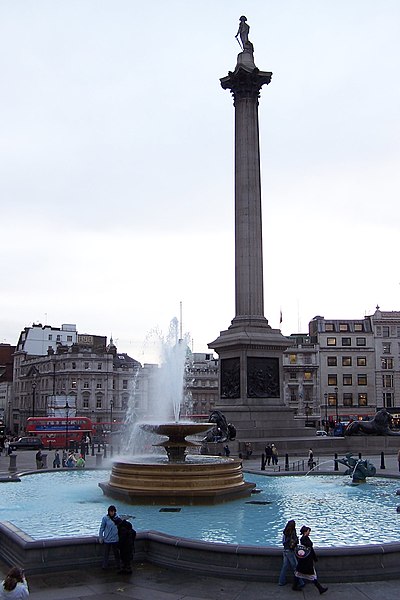
Wellington Arch sits on the roundabout on Hyde Park Corner (it has been moved a couple of times). But there is no statue of Wellington on top. There used to be but it proved too unpopular.
Between 1803 and 1805 Bonaparte amassed an invasion flotilla of 2,343 ships with the intention of invading Britain. This flotilla was kept in its home ports and prevented from invading by the Royal Navy’s Channel Fleet of 30 plus ships under Admiral Sir William Cornwallis; Nelson played no part in this. It was Cornwallis who put together the fleet that Nelson commanded at Trafalgar.
Nelson was of relatively humble origins. Progress through the ranks of the British Navy was on merit and Nelson became a popular hero and commander. Ashore he was mobbed by crowds as a celebrity would be today. Unfortunately for him but fortunately for his heroic status, he died at the height of his popularity during Trafalgar. Although Trafalgar could not stop Bonaparte it did give Britain naval supremacy. Nelson was no radical but Trafalgar was the cup final in a naval world series that would not be challenged for 100 years or more.
The British merchant and the industrialist were to gain power, wealth and empire from this naval victory. The British army of the time was not so egalitarian. Wellington’s commission was bought for him by his brother. Wellington may have been an effective general but he was no democrat. After his return from Waterloo he became a Tory MP and Prime Minister. After his first Cabinet meeting he is reported as saying “An extraordinary affair. I gave them their orders and they wanted to stay and discuss them.”
He got the nickname the ‘Iron Duke’ not because of military prowess but because of the shutters he had on his house to protect him from the mob. He was booed on the streets for the troops cutting down civilians at a meeting for democracy in Manchester (the Peterloo massacre).
Basically he was an old style aristocrat trying to halt social change. So what does Trafalgar Square commemorate? Not so much a decisive naval victory or the death of a popular hero, more a period of change and the birth of the ‘middle classes.’ And Wellington Arch, a fading era.
John Clark